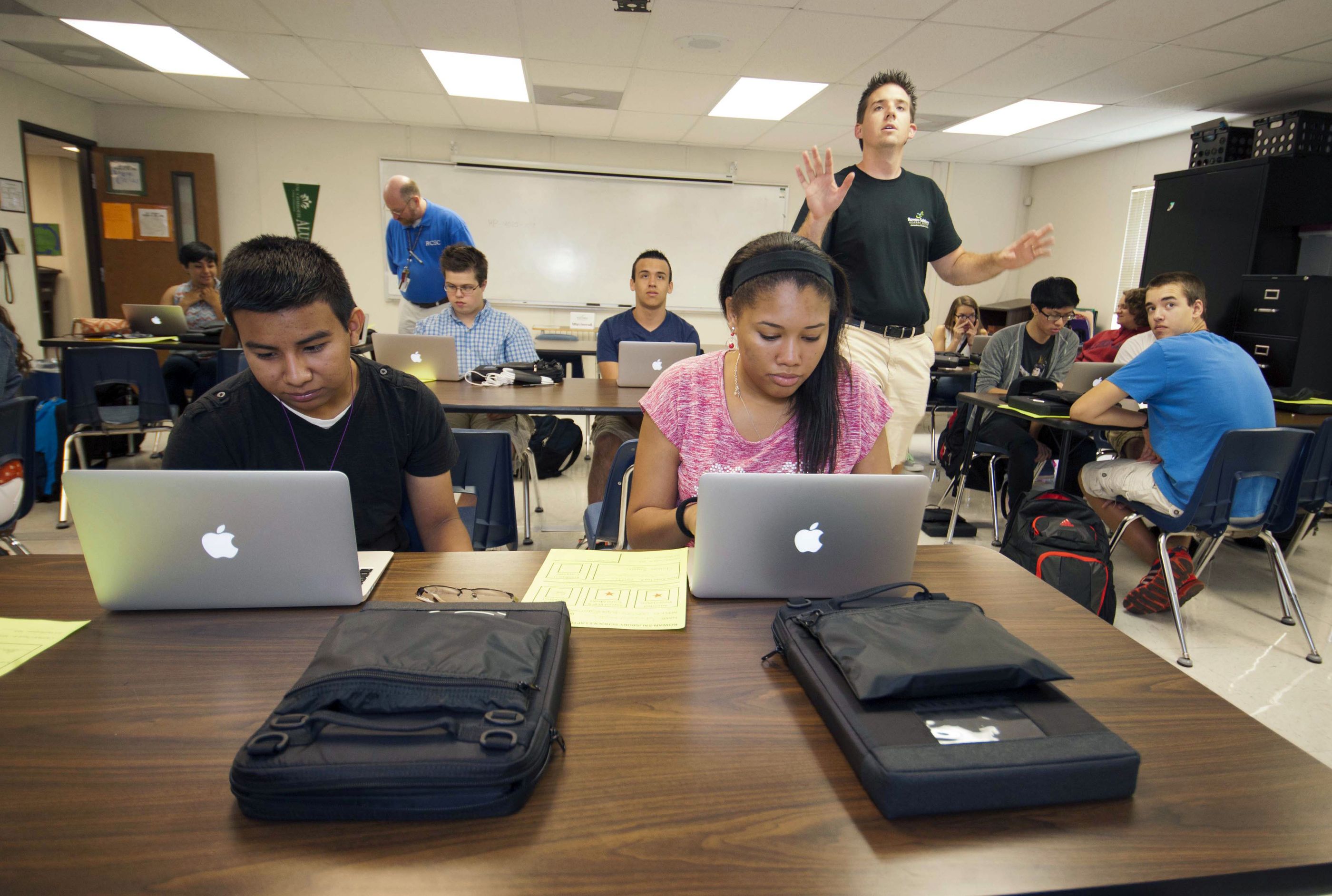Back to School: iPads, laptops coming for Rowan-Salisbury students
Published 12:00 am Friday, August 15, 2014
In the coming weeks, the Rowan-Salisbury School System will be distributing 6,334 MacBook Air laptops into the hands of every high school student in the district.
This year, every Rowan-Salisbury student in third grade and above will receive a digital device of some sort to use in the classroom and at home for the school year.
Teachers received 1,420 laptops at the beginning of summer break. High school students will receive their laptops at the beginning of the year. Middle school students will receive 4,438 iPads sometime this winter, and third- through fifth-graders will receive 4,625 iPads in the spring.
“Technology is not the end all be all. It is a tool in the toolkit for our teachers to use,” said Andrew Smith, director of digital innovation. “It’s all about instruction, and we have a really neat tool that’s going to help our teachers instruct.
“I wouldn’t expect to see the device being used every minute of every day,” he said, but added that technology gives students access to learning resources anytime, anywhere, including at home, in the classroom, on the school bus or even sitting outside.
Smith acknowledged that each student has a unique family life. Some have access to Internet or wi-fi at home, while others do not, but he added that not all homework has to use the Internet.
Students can download material before they go home, go over notes or use programs like iMovie without an Internet connection.
District leaders “hope to see a transformation in instruction,” as digital devices are integrated with problem-based learning, Smith said.
“Technology is a great way to reinforce collaboration,” he said, emphasizing the importance of working in groups in a global society.
Technology also allows students to make instruction relative to their own passions and interests.
“We want to allow our students to have a personalized learning experience,” Smith said.
Preparing the district as a whole and each individual school for this one-to-one digital conversion rollout has been a long, in-depth process.
County commissioners gave permission for the district to repurpose $12 million over the next three years to lease the 16,555 devices — 7,315 MacBook Air laptops and 9,240 iPads.
District leaders decided to use Apple devices because the school system was heavily invested in the brand, already owning a large amount of Apple equipment throughout the district.
Schools are being re-cabled so there are enough connections for all students to connect to the Internet. Each classroom will have a hive, or an access point, to make that possible.
The Rowan-Salisbury technology department hosted a massive teacher laptop rollout in mid-June before teachers left for the summer, giving educators the opportunity to get comfortable with their new devices before teaching with them this year.
Teachers came in groups to the Carter building, where they turned in old devices, received new ones and registered and set up the devices.
Students will go through a similar process, but on a school-by-school basis.
Starting with the high schools, each school will hold a parent night to introduce parents to the deployment process and the one-to-one initiative.
“What we’re doing is very pervasive,” Smith said. “We really want to spend some time talking to our parents and our students about what that looks like.”
At the parent nights, a school administrator or technology facilitator will talk about why the district is doing this, why it’s important and why it’s important for the students to use the devices at home.
They’ll talk about what device the students will be getting and how to take care of it, as well as review the district’s responsible use policy and guidelines for using the device.
Students will sign a digital citizenship contract and responsible use policy.
The student’s technology fee, which helps “defray any cost of damage,” is also due at that time, if not already paid online beforehand, Smith said.
Damage stemming from negligence or abuse is not covered by the technology fee.
The $50 payment for laptops and $25 payment for iPads can be made with credit card or cash.
Each school will have at least three of these 60- to 90-minute parent sessions to ensure parents have an opportunity to attend.
While the deployment process will be similar at each school, it will be customized to fit the community of each school.
On the actual rollout day, students will go to a central location at their school to receive their devices.
They will log in; create a user name, password and Apple ID and connect their devices to the server.
“And then we’ll be done,” Smith said.
According to Smith, the district’s technology facilitators, technology staff and even some “tech savvy students” will be a part of the setup process.
The laptops will come with a reinforced Brenthaven protective sleeve; iPads will come with STM cases.
Smith said the district is focused on teaching its students to be good digital citizens.
Understanding intellectual property, copyright, using appropriate language, avoiding cyber bullying and protecting yourself online are just a few of the aspects of digital citizenship.
He said it’s important for students to understand that “if you say something online, it has the same effects as saying it in person” and “you can’t just download music and expect that to be yours.”



